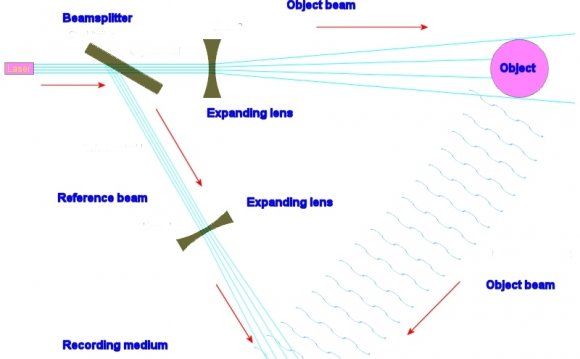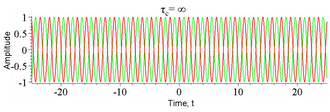
If you want to understand gravity, it makes sense to study black holes. Nowhere else can you find so much gravity so conveniently compacted into such a relatively small space.
In a way, in fact, black holes are nothing but gravity. As Einstein showed, gravity is just the warping of spacetime, and black holes are big spacetime sinks. All the matter falling in gets homogenized into nothingness, leaving behind nothing but warped spacetime geometry.
As black holes swallow more matter, they get bigger, of course. But curiously, it’s the black hole’s surface area, not its volume, that expands in proportion to how much stuff the black hole consumes. In some way, the black hole’s event horizon — the spherical boundary demarcating the points of no return for objects falling in — keeps a record of how much a black hole has eaten. More technically, a black hole’s surface area depends on its entropy, as John Archibald Wheeler’s student Jacob Bekenstein showed in the 1970s.
In the 1990s, other physicists (notably Gerard ’t Hooft and Leonard Susskind) developed this insight further, proposing the “holographic principle”: Information contained in a three-dimensional volume can be completely described by the two-dimensional boundary surrounding it. Just as an ordinary holographic image represents a 3-D scene on a 2-D flat surface, nature itself can store information about the interior of a region of space on the surface enclosing it.
If you think about it, it’s not entirely crazy. There are familiar ways that the information in a 3-D space can be contained on its boundaries. Just imagine a room full of 3-D objects with mirrors on the walls. You can reconstruct everything in the 3-D room from the images on the 2-D mirrors.
In 1995, physicist Juan Maldacena developed the holographic idea further. In essence, he showed that quantum math describing physics in three spatial dimensions without gravity can be equivalent to math describing a four-dimensional space with gravity. (Such an equivalence of two different mathematical descriptions is called a duality.)
Maldacena’s insight suggested that holography might be the key to merging gravity with quantum mechanics. Physicists have sought a way to incorporate gravity into a quantum field theory for decades. If Maldacena is right, then apparently all you need is an extra dimension of space (which is provided naturally in superstring theory). Given an added dimension, spacetime with gravity emerges from the physics described by quantum field theory on its boundary.
Lately this idea has resurfaced in a new context. Some physicists have proposed that gravity has something to with quantum entanglement — the spooky connection between distant particles that befuddled Einstein. And it seems that the holographic duality identified by Maldacena has something to do with the gravity-entanglement connection.
“The emergence of spacetime in the gravity picture is intimately related to the quantum entanglement … in the corresponding conventional quantum system, ” Mark Van Raamsdonk of the University of British Columbia argued in a 2010 paper. “It is fascinating that the intrinsically quantum phenomenon of entanglement appears to be crucial for the emergence of classical spacetime geometry.”
More recent work relates the gravity-entanglement link to mathematical tools called tensors. Describing entanglement in complicated systems of many particles is made easier by using networks of tensors to quantify how multiple particles are entangled. Using tensor networks, physicists have developed algorithms that enable simpler analysis of quantum matter such as superconductors. That work has been going on for years. Newer work with tensor networks has provided insights into how the holographic principle relates entanglement to gravity.
In particular, a formulation of tensor networks called MERA (for multi-scale entanglement renormalization ansatz) seems especially promising with respect to understanding gravity. MERA tensor networks describe patterns of entanglement in certain complicated quantum systems, generating a geometry reminiscent of the extra-dimensional space that Maldacena discussed in his duality. In other words, it’s a real-life realization of the quantum field theory-gravity duality.
“When seen from this perspective, ” writes Orús, “one would say that geometry (and gravity) seems to emerge from local patterns of entanglement in quantum many-body states.” Thus, he points out, the tensor network approach supports the conclusion suggested in previous work by Raamsdonk and others: “Gravitational spacetime emerges from quantum entanglement.”
This link between tensor networks, entanglement and gravity may prove useful in studying the physics of black holes or in investigating the quantum nature of spacetime at very small distances, Orús proposes.
Mathematical details of how tensor networks connect entanglement to the geometry of spacetime are beyond the scope of basic blogging. If you want the whole story of Hilbert space, entanglement renormalization and unitary and isometric tensors, start with Harvard physicist Brian Swingle’s 2012 paper in Physical Review D. (A preprint is available, and a paper with further developments is available here.) Orús has posteda more recent (and more accessible) survey of the field.
thinking out of the box thinking outside the box thinking outside the box synonym thinking outside the cage thinking outside the box examples thinking outside of the box is considered thinking outside shed thinking outside the box meaning thinking outside the box quotes thinking over feeling thinking over synonym thinking over feeling meaning thinking over dana glover thinking over meaning thinking over and over again thinking over feeling personality thinking over and over again synonym thinking past tense thinking past the sale thinking past textbook thinking fast and slow audiobook thinking fast and slow summary pdf thinking pro rich thinking pros and cons thinking pro pro thinking definition thinking time pro design thinking pro con critical thinking pro critical thinking pro con since thinking disruptive thinking since 1826 ucl disruptive thinking since 1826 have been thinking since i were thinking or i was thinking thinking through the past thinking through synonym thinking through communication thinking through the past volume 1 thinking through sources thinking through the past volume 2 thinking through sources for ways of the world thinking through grammar thinking thru thru thinking meaning thinking things thru still thinking meaning thinking of you till it hurts john till thinking place thinking of you till it hurts lyrics thinking about something till it happens wishful thinking till svenska thinking of you till svenska what is thinking about thinking called thinking to myself thinking to yourself thinking to much quotes thinking to hard thinking to myself synonym thinking to do thinking towards the future thinking towards thinking towards life maternal thinking towards a politics of peace positive thinking towards life creative thinking towards success wishful thinking towards thinking with literature towards a cognitive criticism thinking under pressure thinking under stress thinking under the influence human communication thinking under the influence example thinking under pressure synonym thinking under fire thinking under fire bion thinking of you underneath the mexican moon thinking until head hurts thinking about something until it happens thinking of you until it hurts does thinking make your head hurt why does my head hurt when thinking can you think so much your head hurts when your head hurts is it your brain thinking up a storm thinking up math thinking up and leading up thinking up meaning thinking up a hurricane thinking versus feeling thinking versus critical thinking thinking vs thought thinking vs doing design thinking via zoom critical thinking via the abstraction ladder thinking with mathematical models answersRELATED VIDEO












